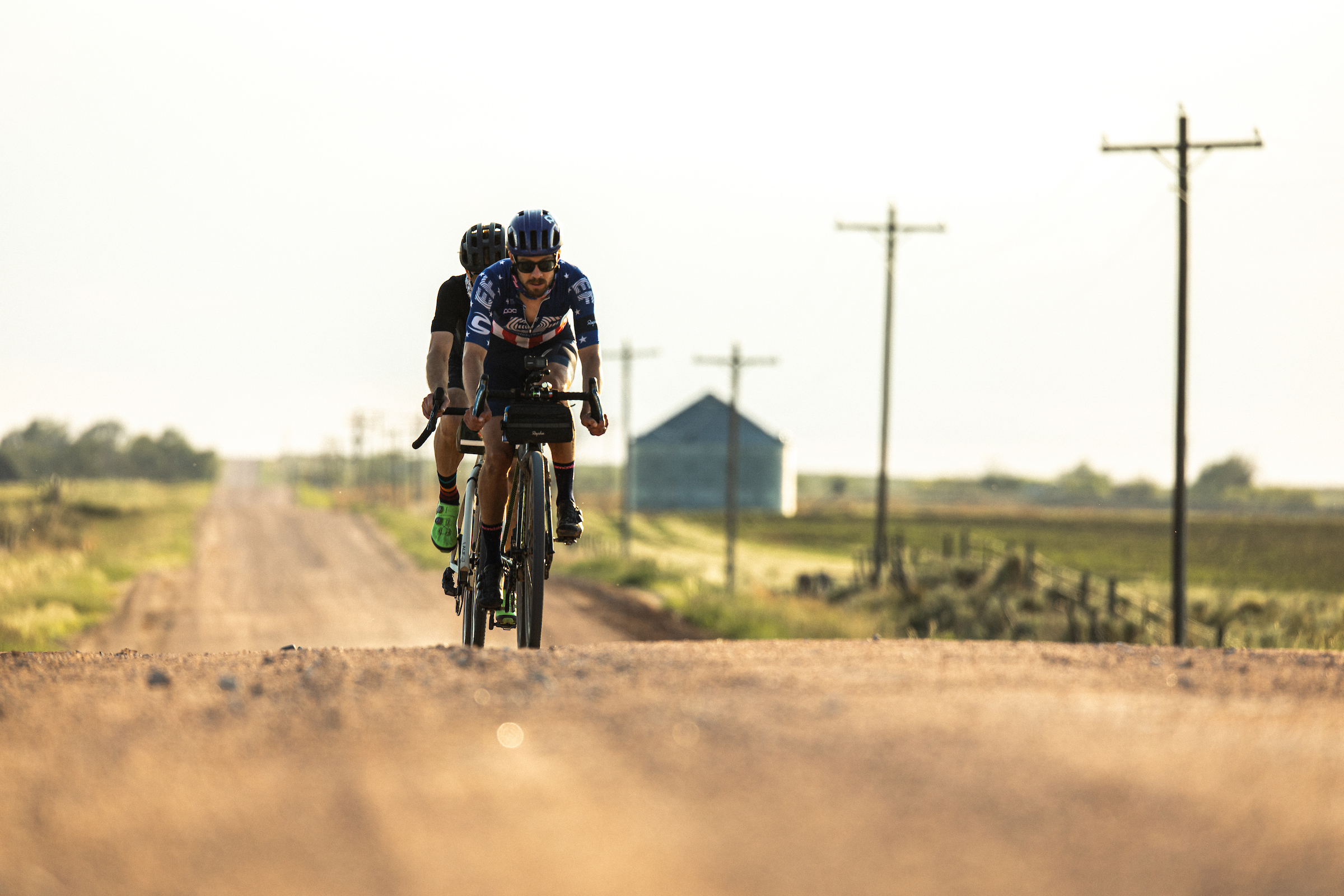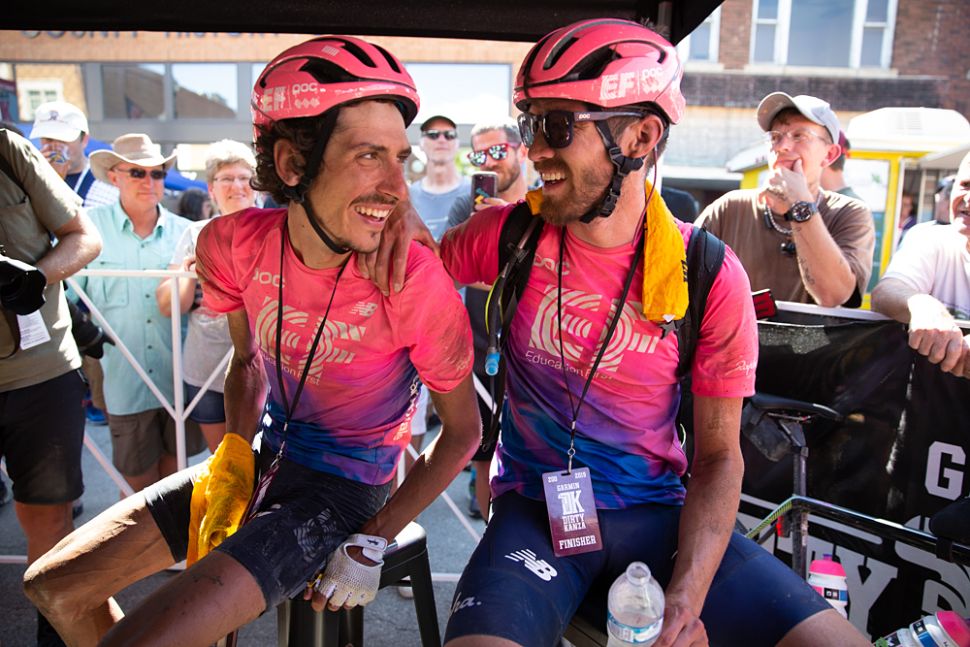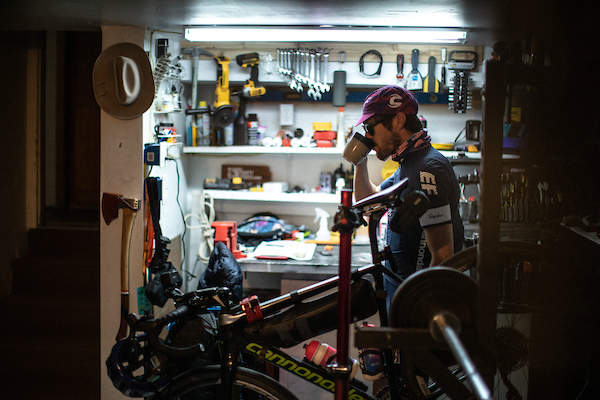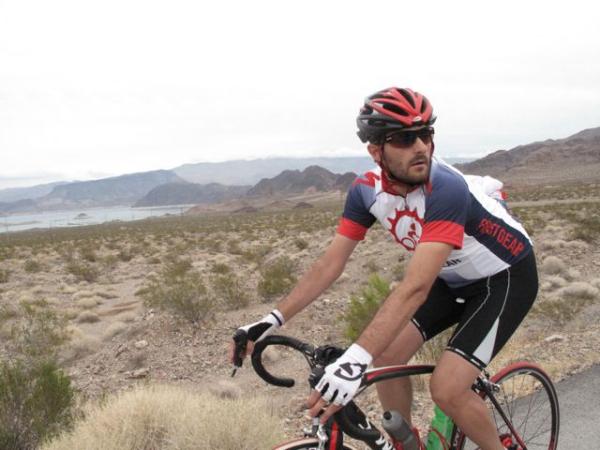Alex Howes' top 10 gravel riding tips
US road champion's advice on gravel bike set-up, fashion, technique, and toenails

Alex Howes might be one of the most experienced male road riders in the WorldTour but the US national road race champion is just as comfortable on a gravel bike as he is in the Tour de France mountains.
The versatile 32-year-old has raced a number of high-profile gravel races and, during lockdown, has embarked on some mammoth off-road rides. He has taken his wealth of knowledge to share his top 10 gravel riding tips.
Whether you’re a convert from the road or just new to cycling and want to dabble in some gravel riding, you’ll find useful information right here.
1. Wiggle your big toe
It’s funny because a few weeks ago, after I did my long ride from Colorado to Kansas, my team, EF Pro Cycling, asked me for the first tip or piece of advice that I could offer. I’ll admit, I was pretty exhausted at the time but the first thing that popped into my head was that I should have trimmed my toenails.
I know it’s not pretty, but I wish I’d done that before setting off on a long ride in the heat. I had one that was a little longer than I would have liked, and your feet certainly swell when it’s hot out there. It’s free, it’s easy and it’s one we can all do.
Along with your podiatry pursuits, and in a more general sense, if you’re riding for a long time on gravel – or any surface for that matter – you’re going to reach varying degrees of discomfort and you don’t need to compound it with something silly like a toenail that’s too long.
2. Go big, go tubeless and life will be good
Whatever you’re doing and no matter the length of your bike ride, you need to ensure that you have the appropriate sized tires. It seems a little crazy to come from the road and run 38mm tires but, honestly, I find them quite fast and a lot of gravel courses will allow you to get away with something like a 35mm.
Get The Leadout Newsletter
The latest race content, interviews, features, reviews and expert buying guides, direct to your inbox!
Your tire selection, when you get it right, will allow you to enjoy your experience on the bike a lot more. You’ll be far more comfortable, and when the onus isn’t on speed, comfort is one of the most important aspects of your set-up. You don’t pay much of a penalty for having wider tires and they tend to do better as tubeless if you run something bigger. This will also improve your control over the bike and will lower your risk of suffering a puncture.
Also, if you’re going down the tubeless route then make sure that you pack some tire plugs and maybe bring a tube along with you just in case you tear a tire. It’s also really important that you learn how to change a tire. It’s not always self-explanatory, so my advice would be to find someone who knows how to do this, buy them a beer, and have them explain what to do. Alternatively, there are plenty of online tutorials on YouTube that can help.

3. Don’t go alone
Once your friend has finished their beer, inform them politely that their company will be required for the ride. It’s important to have a second beer waiting in the wings if you sense their hesitation. Beer number two will ensure that your friend will join you but, honestly, having company on your first gravel rides is a great idea.
One of the cooler things about riding on gravel is that you’re generally on much quieter roads. Fewer people means less stress from passing cars, and you’ll be able to chat with your friend as you ride alongside each other. Having company is also incredibly helpful from a safety point of view.
4. It's not a fashion show
Clothing is entirely dependent on the climate and conditions you’re riding or racing in. Another cool thing about gravel is that the terrain and roads go almost anywhere and you can make it as far as the Arctic Circle if you want to. I wouldn’t recommend a t-shirt for a ride like that but, in general, the dress code is pretty relaxed and the gravel community will cut people a lot of slack when it comes to choosing your own adventure style.
Comfort is crucial but so too is making sure that you wear cycling-specific layers against your skin, especially on the bottom half of your body. Generally speaking, you shouldn’t be fixated on or thinking about aerodynamics, so a flap of fabric sticking out here or there doesn’t make a difference.
We wore t-shirts for Dirty Kanza last year and I think we did pay a price for that because it turns out you still go pretty fast when you’re trying to win but if you’re not racing it doesn’t matter too much.

5. Think about your set-up
Just because you can ride your 1950 Italian frame – à la Eroica – doesn’t necessarily mean that it’s your best option. If you’re coming from the roadside, you’ll probably run your bars and stems quite low and on the gravel you won’t suffer if you bring those up a bit.
The bumpier roads demand a position that’s higher up, especially for long days in the saddle, because that will take the pressure off your lower back. A higher-up stem and bars will also give you greater handling over any trickier sections or loose gravel. You could also think about making your stem a bit shorter than what you’d expect on your road bike.
We’ve talked about bigger tires but, personally, I’d also recommend a one-by chainring set-up, especially if you’re newer. This is such a simple way of riding and it eliminates several variables that can complicate matters.
From a speed point of view, if you’re riding gravel you won’t pay any penalty for only having one chainring upfront and if the rain starts to come down you’ll clear the mud a lot better through the back-end.
6. Be mechanically prepared
You're on rough roads, and you’re going to see a lot fewer people, so if your friend declined the two beers – or worse, drank them but still decided not to ride with you – then it’s really important that you become mechanically prepared for the ride ahead.
It helps to know how to use a chain tool, and always pack a set of tyre levers. Try and think ahead, so if it’s a longer ride than a couple of hours I tend to pack a spare spoke, and a chain tool.

7. No need for speed
I rode with Lachlan Morton a couple of weeks ago and the pair of us have almost exclusively been riding gravel and mountain bikes in the last few months. We’re probably behind the guys who were stuck indoors through quarantine when it comes to kilometres.
They were able to rack up the distances through using their home trainers, but we were out there training every day and put in some big hours, even if our distances and speed were significantly lower.
My advice, especially if you’re coming from the road, is not to obsess over the numbers. Your power or watts are still going to translate onto gravel reasonably well, if you’re worried about that, but don’t even bother getting hung up over the speed.
8. Tweak your technique
Generally, the technique employed on the road is the same for gravel riding but there are a few necessary tweaks.
What I’ve found is that any mistakes or errors in your technique will be magnified on gravel so you’ll want to take the corners a bit slower. It’s common to have your tires slide out beneath you on gravel or dirt and, with that, you need to pay attention and make sure that you’re keeping your weight over your tires and that you’re not leaning too far into a corner. You want to keep your bodyweight upright.
Standing up on gravel is also different. You’ll want to keep your weight a bit further back than you would do on the road because that will give you better traction when you stand up.
I’d also recommend learning how to bunny-hop if you don’t know how to do that.

9. Plan your route
Gravel rides are going to take you away from civilization and, while that’s great for all the reasons I’ve touched on, it also emphasizes the importance of planning your route.
Whenever I’m planning a ride I always like to mark down some rest points or bail-out marks where I can decide to restock on supplies or decide to go back. Most of the gravel roads you ride on will not have cell service so you need to be accountable for what you’re doing and where you’re going.
I remember a few years ago I was in a bad situation in New Jersey. Most people wouldn’t consider NJ as a gravel hotbed but they some incredibly rural areas. I ended up getting lost, and everything looked the same because there’s no topography. The roads were really sandy, which made them super slow and it started to rain. It turned into a bit of a flood and I had water above my knees at one point. I finally found some cell service but by then it was so dark I had to call my wife to come and find me.
It was a total mess but please don’t let that put you off gravel. Instead, just learn from my mistakes and prepare yourself.
10. Have fun
You’re riding your bike on gorgeous gravel roads and there are so many cool places that you can go to. Just remember the most important point: Enjoy it.
Looking for professional advice on gravel and all other groupsets? Your local font of knowledge is your nearest Shimano dealer. Discover yours here: gravel.shimano.com/en/dealers
Daniel Benson was the Editor in Chief at Cyclingnews.com between 2008 and 2022. Based in the UK, he joined the Cyclingnews team in 2008 as the site's first UK-based Managing Editor. In that time, he reported on over a dozen editions of the Tour de France, several World Championships, the Tour Down Under, Spring Classics, and the London 2012 Olympic Games. With the help of the excellent editorial team, he ran the coverage on Cyclingnews and has interviewed leading figures in the sport including UCI Presidents and Tour de France winners.
